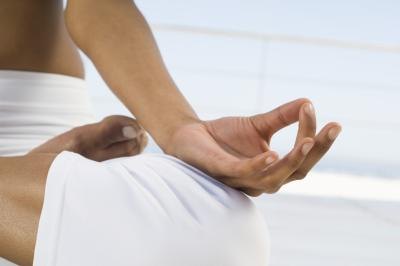
Overview
Although the average American's resting heart rate is between 60 and 80 beats per minutes, according to the American Heart Association, your heart rate might be much higher if in a stressful situation. Stressful situations differ from person to person. Whether it's public speaking, a big game, job interview or even a first date that gets your pulse up, you can lower it through relaxation techniques.
Deep Breathing
Deep breathing is simple to perform and something you can do in almost any situation without it being noticeable to anyone else. Your goal is to to breath completely and deeply from your abdomen. The University of Maryland Medical Center advises placing one hand on your stomach and one on your chest while in a seated position. Breath in as much as you can toward your belly, so that it pushes against your hand but your chest does not rise very much. Slowly exhale and repeat until your heart rate slows.
Progressive Relaxation
MayoClinic.com and the University of Maryland Medical Center both suggest using progressive relaxation as a relaxation technique to lower heart rate. In progressive relaxation, you tense and relax your muscle groups one at a time. Begin with your toes and work your way up your through your legs, torso and arms and end with your head and neck. Hold the tension for at least five seconds before relaxing for 30 seconds and moving on to your next body part.
Autogenic Training
In autogenic training, you use mental imagery and awareness of your body to move into a less stressed state, explains MayoClinic.com. You should try to shift your focus to calming images and words while you recognize physical tension in your body and work to let those tensed areas release and relax. The University of Maryland describes the process as first envisioning a peaceful setting to calm your mind. Then, you begin to focus on the physical sensations in various parts of your body such as heavy limbs or full, deep breaths in your chest.
www.livestrong.com





No comments:
Post a Comment